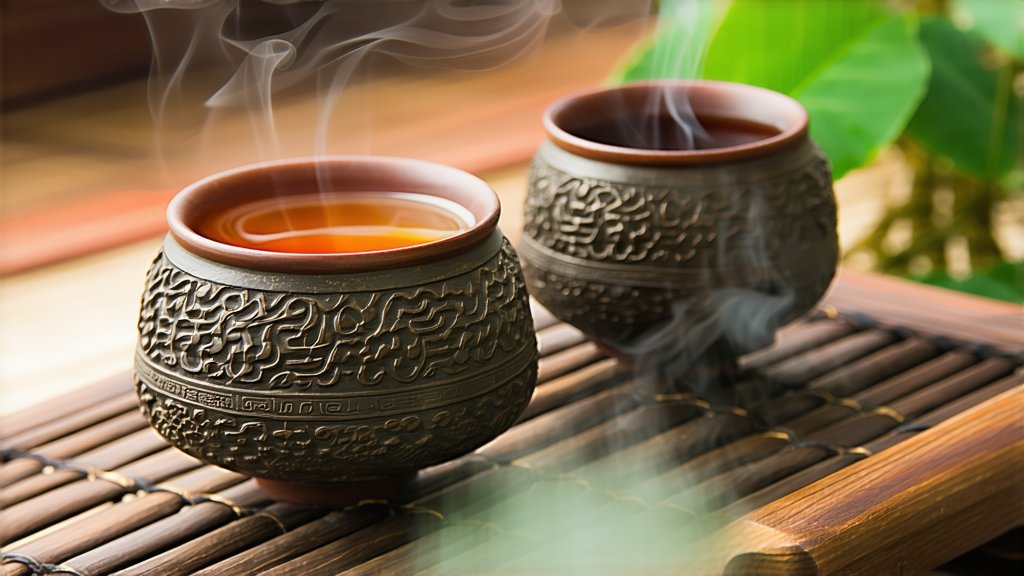
Pu-erh tea, a revered member of the dark tea family, stands as a testament to China's profound tea culture that spans millennia. Its origins trace back to the ancient caravan routes of Yunnan, a province nestled in the southwestern part of China, where the humid climate and fertile soil create ideal conditions for tea cultivation. This variety of tea is not just a beverage but an experience, steeped in history and tradition, offering a window into the complexities of Chinese tea craftsmanship.
Historical Significance
The story of Pu-erh begins over a thousand years ago, during the Tang Dynasty (618–907 AD). However, it gained prominence during the Ming Dynasty (1368–1644 AD) when it became a crucial commodity along the ancient Tea Horse Road, which facilitated trade between Tibet, Yunnan, and other regions. The name "Pu-erh" itself is derived from the market town of Pu'er in Yunnan, which was a significant hub for tea trading.
Over time, Pu-erh tea has evolved into two main categories: raw (Sheng) and ripe (Shou). Raw Pu-erh undergoes natural fermentation over several years, developing a robust flavor profile that matures with age. In contrast, ripe Pu-erh undergoes a speedier fermentation process known as "wet piling," resulting in a mellower taste that can be enjoyed relatively sooner after production.
Varieties and Production
Pu-erh tea comes in various forms, including loose leaves, bricks, cakes, and mushrooms, each embodying the artistry and tradition of tea making. The leaves are typically harvested from the large-leaf species of the Camellia sinensis plant, native to the Yunnan region. The processing method is distinctive and intricate, involving several steps:
- Plucking: Only the top two or three leaves and a bud are selected for high-quality Pu-erh.
- Withering: Freshly picked leaves are spread out to wilt under the sun.
- Fixation: The withered leaves are briefly fried or steamed to halt enzymatic activity.
- Rolling: Leaves are rolled into spiral shapes to enhance the extraction of flavors during brewing.
- Drying: Rolled leaves are dried either naturally by sun drying or artificially.
- Aging/Fermentation: For raw Pu-erh, the leaves are compressed into shapes and left to age naturally. Ripe Pu-erh undergoes a controlled fermentation process where piles of tea are kept moist and warm to accelerate microbial activity.
Appreciation and Tasting
To truly appreciate Pu-erh tea, one must engage in the traditional Gongfu tea ceremony, which emphasizes mindfulness and respect for the tea. Here’s a step-by-step guide to savoring this exquisite tea:
- Preparation: Use a Yixing clay teapot or a Gaiwan (a lidded bowl). Rinse the teapot with boiling water to warm it up.
- Infusion: Place about 5 grams of Pu-erh into the pot. For raw Pu-erh, use slightly cooler water (around 90-95°C), while for ripe Pu-erh, boiling water is suitable.
- Brewing Time: The first infusion should be quick, around 5-10 seconds, to cleanse the leaves. Subsequent infusions can be gradually increased in time, typically by 5-10 seconds with each brew.
- Enjoyment: Pay attention to the evolving flavors, aromas, and textures. Raw Pu-erh tends to have a more astringent, earthy taste that mellows with age, while ripe Pu-erh offers a smoother, sweeter profile with notes of wood and earth.
- Multiple Infusions: Pu-erh tea is known for its resilience; high-quality leaves can be infused multiple times, each revealing different characteristics.
Health Benefits
Beyond its cultural and sensory appeal, Pu-erh tea is celebrated for its potential health benefits. It contains antioxidants, aids digestion, promotes weight loss, and may help regulate blood sugar levels. The fermentation process also contributes probiotics, which can benefit gut health.
In conclusion, Pu-erh tea is more than just a drink; it is a journey through time, a blend of nature's bounty and human ingenuity. Its rich history, diverse varieties, intricate production methods, and unique tasting experiences make it a fascinating subject of study for tea enthusiasts worldwide. Whether you are a seasoned connoisseur or a curious newcomer, exploring Pu-erh tea opens a door to understanding a vital chapter in the story of Chinese tea culture.